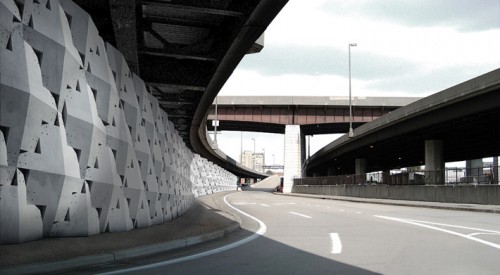QuaDror: A Brand New Geometry for Twenty-first Century Materials
Day to day I tend focus primarily on specific materials and how they’re unique and different from each other. I’m interested in how or why a material was developed and I like to think about ways it might become useful. But sometimes it’s also fascinating to think about the things materials have in common, and to consider how different substances might be able to do the same job at different scales.
Image courtesy good.com
Designer Dror Benshetrit of Studio Dror likewise stumbled across a unique geometric configuration while working in his studio – geometry that functions as a joint, and which can be used to build anything from tiny objects you can hold in your hand to massive structures such as bridges and highway partitions. Called QuaDror, the geometry was recently presented at the Design Indaba conference in Cape Town. Diagonal framing members interlock and carry gravity loads, while simultaneously resisting lateral loads. The geometry can be produced from flat sheets, and it expands to resist loading.
Images courtesy Studio Dror
“QuaDror’s multi-scalar application is an advantage, allowing the joint to be applied in small models, buildings, and bridges alike. Given its rapid assembly and light weight, it may also be utilized in disaster recovery housing. Perhaps the system’s greatest contribution is the convincing demonstration that form and performance are mutually beneficial” (Brownell). It makes me wonder – is this design so compelling because it feels fractal? Are there any specific materials whose properties enhance the performance of the geometric configuration?
This one gets filed everywhere and nowhere!
Cited:
Brownell, Blaine. “Quadror” Transmaterial.net 03/04/11. Accessed 04/19/11. URL.



















Leave a Wordpress Comment: